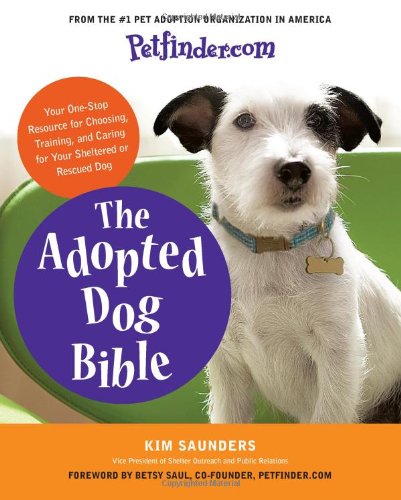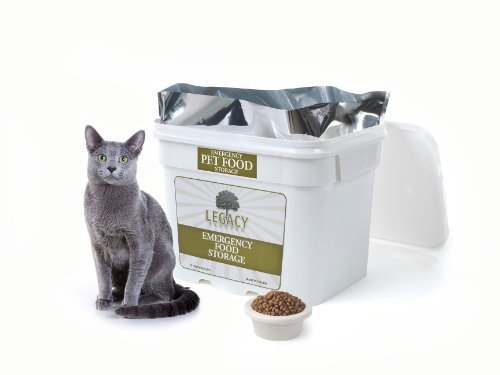
 Credit: Copyright of iStockphoto. All rights reserved.
Credit: Copyright of iStockphoto. All rights reserved.
Just like humans, dogs can be allergic to almost anything - and when they are suffering from a food allergy, owners need to work out what is in the food that's causing the problem, so it can be eliminated from the diet.
Just like humans, dogs can have an allergic reaction to almost anything. Although some allergies are easily identified and straightforward to manage, owners often need to turn detective to find the cause of a food allergy, which can then be eliminated from the diet.
The most common allergy in dogs is Canine Atopic Dermatitis, otherwise known as Atopy, which is more probably a genetic disposition to hypersensitivity. Environmental substances such as house dust mites, mould spores and seasonal pollen cause an over-reaction of the immune system in some dogs. Allergic skin disease can also be caused by diet, though it is less common and only represents about 15% of atopic cases seen by veterinarians. Unfortunately, dogs that suffer from one allergy can quickly and without any apparent reason to its owner, develop a food allergy too.
Most current research on this subject suggests that the true diagnosis of dogs suffering from an allergy to food is uncommon and, because of the complicated nature of the condition, accurate statistics for food allergy in dogs is generally unavailable at present. The research does however point towards food sensitivities being the third most likely skin allergy after flea-allergy and Atopy.
So, if you see a dog relentlessly scratching, if they have developed patches of inflamed skin or have areas of hair loss – it is worth investigating whether fleas, dust mites or tics could be the culprits first. Rejecting that as a possibility, next ask whether something within the environment might have changed to cause the irritation. A change of carpet, floor cleaners and aerosol room sprays are likely suspects inside the home, while chemicals used in the garden or on pavements outside the home or even the recent addition of a new plant in the garden should also be considered likely causes.
A vet should see a dog with an abnormal skin reaction (flaking, redness and/or lumps) as soon as possible, because there are many causes other than an allergy including some which are life-threatening. It is useful to point out that although a food allergy is probably genetic, puppies under six months of age do not tend to display any reactions or symptoms to this condition, which means any symptoms a puppy displays could be connected to another illness, abnormality or poison. Certain breeds of dog are more susceptible to allergies than others and these include boxers, cocker spaniels, springer spaniels, collies, dalmatians, German shepherds, lhasa apsos, miniature schnauzers, retrievers, shar peis, soft-coated wheaten terriers, dachshunds, and west highland white terriers.
Skin reactions are not the only symptoms associated with a food allergy. It is important to recognise that a reaction to certain types of food or a particular ingredient in food can occur spontaneously, even when a dog has been on the same diet for many years. It is fair to say however that when these symptoms start occurring following a recent change of diet or having given a new treat, it is indicative of an allergic reaction to something in the new food.
Symptoms occur non-seasonally, so the reaction is not dependent on high pollen count periods. Vomiting, diarrhoea, loss of weight, excessive flatulence, refusal to eat, itchy feet and/or ears, excessive thirst, constipation, excessive stretching (typical in dogs with upset stomachs), difficulty breathing, some loss of vision, incontinence and seizures are all potentially linked to a food allergy. Of course, these symptoms could also be indicative of other serious health issues, which is why a vet needs to diagnose the nature of the condition and eliminates other more serious problems before settling on a diagnosis of food allergy.
Treating a dog with a food allergy - thereby making him or her feel comfortable again - is difficult and complex, but not impossible.
The first step in this journey is to treat the most obvious problems, which in fact are the secondary symptoms, including any itchy, scratched, inflamed and broken areas of skin. Consequential bacterial or yeast skin infections will be painful and irritating and are likely to become worse if left unmanaged. Depending on the nature of the primary and secondary symptoms, a vet may prescribe an antihistamine such as Benadryl to help reduce the effects of airborne allergens, but this won’t help if the problem is entirely due to the dog’s diet. The vet may prescribe a steroid, such as Prednisolone, in cream or tablet form, which will also help ease the itchy skin (as there is an established link between steroids and kidney disease and some serious side effects too, this should only ever be considered a temporary solution).
An antibiotic tablet and/or cream may also be prescribed, if the skin has become infected through scratching, but again this will only treat the secondary symptom and not the problem causing the irritation. In the most severe cases, a vet may prescribe cortisone – but I would question the continued use of this powerful drug, either as an injection or tablet or in any other form, because of the extremely serious nature of potential side effects, which include the impaired ability to fight against all kinds of infection. The problem with cortisone is that it reduces the effect of the immune system, thereby preventing it from overreacting to allergens. But in doing so, it also prevents the immune system properly dealing with other infections. Cortisone cream is nonetheless useful as a soothing agent, but only as a temporary measure.
The only remedy to a food allergy is to find the exact part of a dog’s diet - the ingredient causing the problem - and then remove it (permanently) from the routine and occasional variety of things they are given to eat. And this is where the dog’s owner must turn detective and follow a logical and meticulous process of trial, error and elimination to solve the problem. Vets can help in this process, but it is the dog owner's tenacity that can prove crucial. Sometimes the simplest of things can remedy the situation. For example, swapping to a simple diet of cooked chicken and boiled white rice for a couple of weeks is sometimes enough to give the gastrointestinal system a rest and give the immune system time to recoup and recover.
The vet will probably suggest taking a blood sample for analysis. While this in isolation is not always successful in finding the cause of the food allergy, it can often point owners in the right direction and cut the amount of time spent finding the problem allergen. There are several different types of blood test available on the market, so ask your vet which one is the most effective. Some test for a range of dog food allergies, others also test for known problems in manufactured pet food, such as immune globulin E. A blood test may find the exact cause of a skin reaction or other allergy symptoms (happy days), but in many cases it will only help find a group of elements that a dog is reacting to, and it is then a matter of trial-and-error to thin this list down to a single problem pet food ingredient.
These blood tests work by a vet injecting a dog with various known allergens and then waiting to see which ones cause a change in blood levels. Unfortunately, the very act of presenting these allergens to a dog in this way can trigger a new allergy to erupt. For this reason not all vets agree blood testing is the best thing to do for this kind of diagnosis.
Tinned and dry foods sometimes claim to deal with food allergies in an effective way. The problem is, many of these are very expensive – and bearing in mind a dog will ordinarily need to stay on the same diet for the rest of its life, the cost is often prohibitive. These foods work by omitting the common food allergy ingredients from products manufactured, but if you can arrange to do this yourself, you can manage the condition effectively and economically. Moreover, some specialised foods sold as being hypoallergenic simply don’t work, because they do not exclude all the allergens contained in standard pet foods.
A vet on the other hand will probably recommend a ‘diet elimination trial’, which basically means putting the dog on a very strict homemade diet or a specialised commercial diet for 12 weeks. During this time your dog must not consume any treats, scraps or titbits and must only eat the food authorised and prescribed. Flavoured chewable toys are also banned during this period, because the flavour impregnated into the toy could be the very allergen the trial is aiming to exclude.
There are certain ingredients common to most manufactured dog food that are known to cause allergies in some dogs. These include beef, chicken, lamb, fish, wheat, dairy produce, corn, yeast and soy. More often than not, it is a protein-based allergy at fault, but there are many types of protein contained in dog food – so trying to find out which one is the culprit is sometimes very difficult. In addition, it could be that it is not a main ingredient that is causing the problem, but one of the many preservatives, flavourings, additives or colourings. A vet will usually prescribe substitute diets during the trial period. The intention here is to feed the dog a kind of protein that it has not had before, and one that will be better tolerated by the immune system. The other alternative is a true hypoallergenic diet, where manufacturing processes the proteins into smaller pieces than in standard pet foods. Sometimes a vet will recommend both ‘novel protein’ and ‘hypoallergenic’ diets run concurrently for the 12 week period.
If the first trial fails, all is not lost. A new trial with different food (and with a different set of proteins) is then started ... and so on until a diet is found that the dog tolerates easily. Once the problem ingredient is found, a cost-conscious dog owner can devise and make-up their own homemade diet that excludes that particular ingredient or additive. This will help make the longer-term management of a dog with a food allergy much more affordable.
Meal times are one of the most enjoyable events in a dog’s day, so despite the process being sometimes very difficult, achieving an outcome everyone wants is very worthwhile. Helping a dog overcome the suffering, irritation and frustration of a food allergy is extraordinarily uplifting and a tremendous relief for everyone involved.
 Designer Dog Collars
Your dog can be stylish too!
Designer Dog Collars
Your dog can be stylish too!
 Do You Deserve Your Dog?
Credit: sixninepix
Do You Deserve Your Dog?
Credit: sixninepix
 Prepare your Pets for Natural Disaster
In light of all the natural disasters that have happene
Prepare your Pets for Natural Disaster
In light of all the natural disasters that have happene
 How To Get Rid Of Ticks on Dogs Using Safe and Cheap Alternatives to Frontline Flea and Tick Control
Estimated reading time &ndas
How To Get Rid Of Ticks on Dogs Using Safe and Cheap Alternatives to Frontline Flea and Tick Control
Estimated reading time &ndas
 Pet Strollers
A pet stroller is a great way to take the furr
Pet Strollers
A pet stroller is a great way to take the furr
Copyright © 2005-2016 Pet Information All Rights Reserved
Contact us: www162date@outlook.com